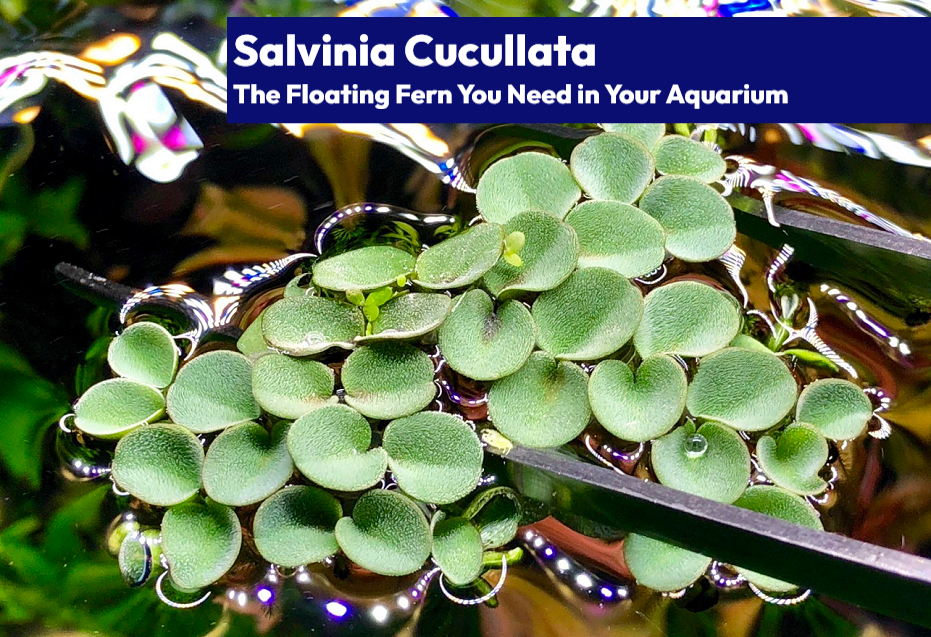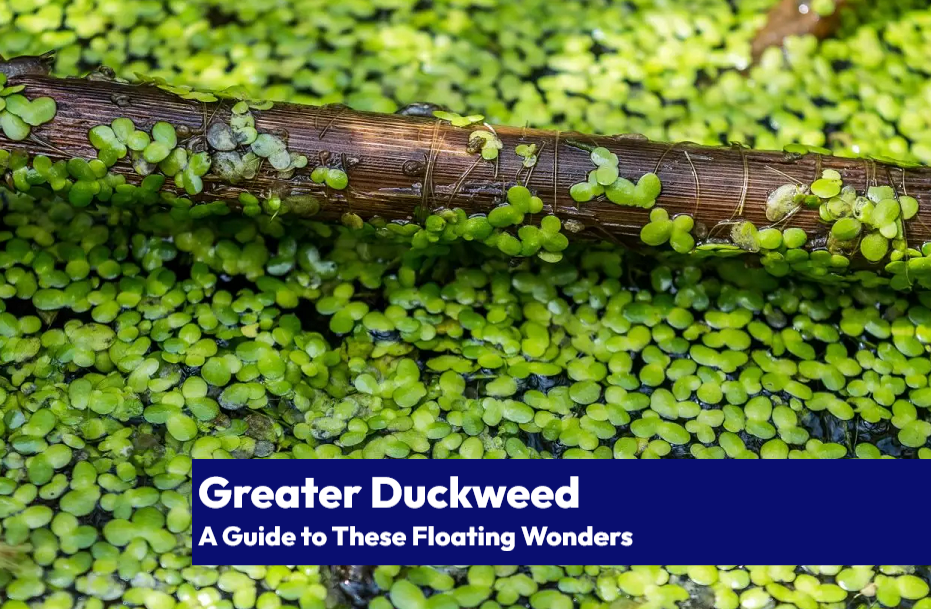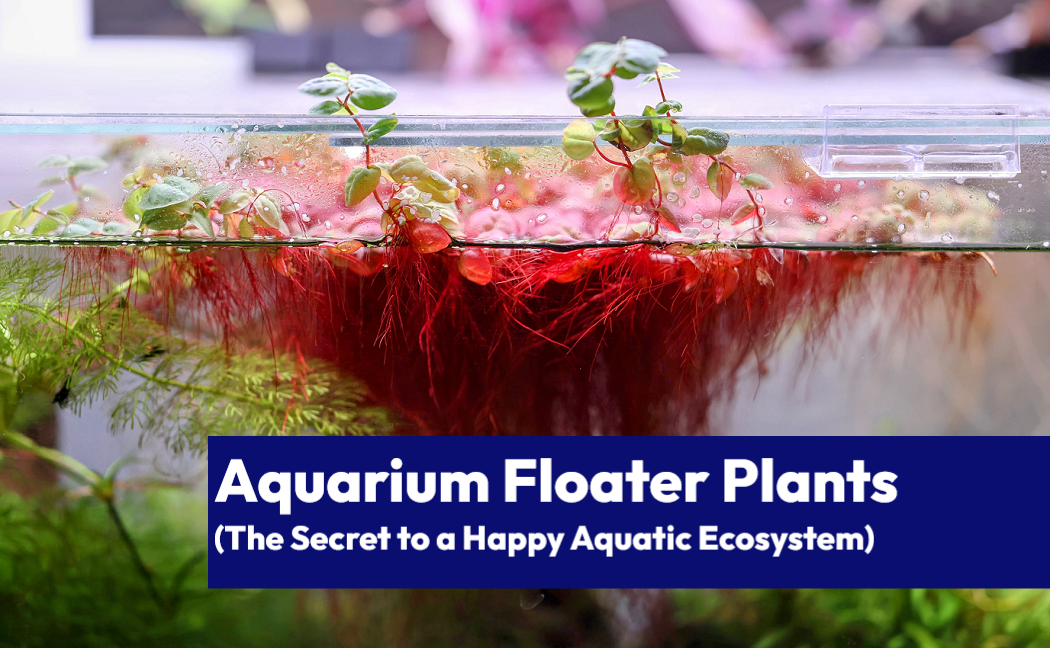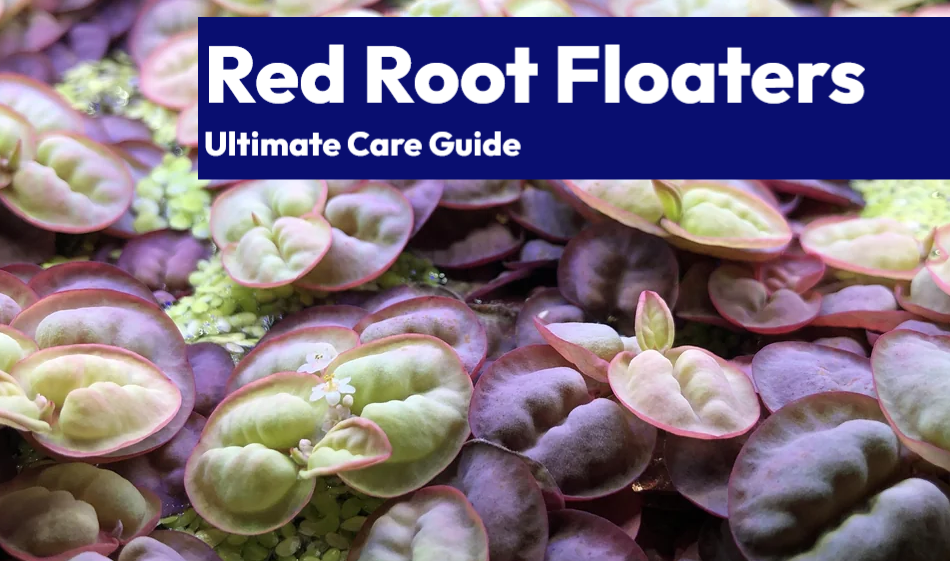Dwarf water lettuce, or Pistia stratiotes, is a beautiful and beneficial floating plant that is perfect for your garden pond or home aquarium. This plant can grow rapidly, providing shade and shelter for baby fish and shrimp. If you’re thinking of adding this to your tank, here’s what you need to know about caring for, growing, and managing your dwarf water lettuce.
| Care Data | Description |
|---|---|
| Light | Medium to high |
| Temperature tolerance | 15 to 35°C (59 to 95°F) |
| Optimum temperature | 22 to 30°C (72 to 86°F) |
| Carbonate hardness | 0 to 14°dKH (0 to 2.5°dH) |
| pH value | 5 to 8 |
| Carbon dioxide (CO2) | 0 to 40 mg/l |
| Nitrate (NO3-) | 10 to 50 mg/l |
| Phosphate (PO43-) | 0.1 to 3 mg/l |
| Potassium (K+) | 5 to 30 mg/l |
| Iron (Fe) | 0.01 to 0.5 mg/l |
| Propagation | Runners |
| Can grow emersed? | Yes |
| Suited for outdoor cultivation / ponds | Yes |
| Aquarium suitability | Yes |
| Difficulty | Medium |
| Growth | Fast |
What is Dwarf Water Lettuce?
Pistia stratiotes is a species of aquatic plant that belongs to the Araceae family. It is native to tropical and subtropical regions, but has been introduced to nearly all freshwater waterways globally. The plant gets its name from its soft, light green leaves that form a rosette and float on the surface of the water. These leaves are covered in short white hairs, have parallel venations, and measure 2 to 15 cm in length.

Care & Maintenance
Dwarf Water Lettuce care is straightforward and simple. It does best in tropical environments with a water temperature between 22 and 30°C (71.6 and 86°F), pH levels of 6.0 to 7.5, and water hardness of 4 to 5 dKH. It prefers slightly shady environments and moderate lighting, but too much direct sun can cause scorching and yellowing.
Regular pruning is necessary to prevent overgrowth, but trimming and cutting back the roots can actually improve the plant’s overall health. Just make sure not to submerge the leaves or floret.
Benefits of Dwarf Water Lettuce
Dwarf water lettuce has many benefits for your aquarium. It also absorbs ammonia and nitrates from the water, keeping your aquarium environment healthy and clean. The plant’s foliage and roots offer shelter for shy fish and shrimp species, and its leaves provide a platform for the growth of beneficial bacteria.
Controls Algae Growth
The water lettuce is a natural competitor to algae and takes away its food source, preventing it from growing. While this may improve the appearance of your tank, low levels of algae could be problematic for algae-eating creatures, like shrimp and some fish species. To ensure they still have a source of food, consider supplementing their diet with algae wafers.
The Beauty of a Fuzzy Floret
When Dwarf Water Lettuce is healthy and thriving, it’s a true sight to behold. The plant floats on the surface of the water in small florets that resemble lettuce or cabbage heads. Each leaf is thick and covered with fine hairs, giving it a distinctively fuzzy texture.

As the plant ages, small flowers may form in the center of the floret, and if you’re lucky, you might even see tiny red berries. The roots of the Dwarf Water Lettuce are long, white, and black, and they fall down the water column, providing protection and cover for smaller creatures.
The Benefits of a Floating Friend
When you add Dwarf Water Lettuce to your aquarium, you’ll quickly see the benefits. The first perk you’ll notice is its ability to provide shelter. This floating plant sits on the surface of the water and continues to grow, offering more and more cover from heat and light.
The roots of the Dwarf Water Lettuce also extend deep into the water column, creating a beautiful curtain of soft tendrils for fish and inverts to swim through. This is especially helpful for smaller creatures, such as fish fry, as they can use the plant as a hiding spot from predators.
In addition to providing shelter, Dwarf Water Lettuce also has a positive impact on the water quality. Like all aquatic plants, it pulls nutrients from the environment and can starve out algae. This leads to a cleaner tank with less algae accumulation. Dwarf Water Lettuce also absorbs harmful toxins, such as ammonia and nitrates, which come from plant and animal waste.
Tank Size
Thanks to its compact size, dwarf water lettuce doesn’t need a massive tank to thrive. We recommend a minimum tank size of 10 gallons (37.9 L) or larger. A smaller tank may pose some challenges, especially if you plan on adding aquatic animals. The main reason for a 10-gallon (37.9 L) or larger tank is to accommodate the lengthy roots and moderate growth rate.
Adding Dwarf Water Lettuce to Your Aquarium
Adding this plant to your tank is as simple as gently placing the roots into the water and floating the leaves on the surface. But wait! Before you do that, it’s important to quarantine the plant. Just like new fish and inverts, water lettuce can carry diseases and parasites, so it’s best to give it some time in a quarantine tank to make sure it’s healthy.

Once you add the plant to your primary aquarium, keep an eye on it. You may notice some discoloration or root shedding, which is normal. However, discoloration is a sign of improper lighting and yellowing is usually a sign of too much direct sun. To prevent this, make sure to keep the lighting levels moderate and never submerge the leaves or floret.
Adjusting Water Flow and Filtration
Dwarf water lettuce does a great job of cleaning your tank, but you still need a filter to maintain water quality. Make sure to set the filter so that it doesn’t create strong currents that could stunt the plant’s growth. Dwarf water lettuce doesn’t like too much movement in the water, so keep things light and gentle.
Trimming and Pruning
Regular pruning is an important part of dwarf water lettuce care. Once the plant reaches maturity, you may need to start trimming it on a weekly basis to prevent overgrowth. Simply pinch off the plantlets that start to form in the center or cut off some of the roots with scissors. Trimming the roots can actually improve the plant’s overall health by leaving fewer tendrils for it to maintain.
Propagation
This plant is truly one-of-a-kind! In the wild, it can propagate sexually through the fertilization of male and female flowers. But in closed tanks, the plant will spread asexually through stolons, or horizontal stems or roots. These stolons will sprout new plants at different nodes, creating “daughter” plants that can continue to grow into full-sized ones.
The choice is yours! You can either let the plant spread and cover the entire surface of the water, or intervene by snipping the stolons and moving the daughter plants to another tank.
Tankmates for Dwarf Water Lettuce
Dwarf water lettuce is a great addition to your aquarium and can coexist with many different species of fish, shrimp, and snails. Some fish and shrimp may eat the edible roots, while others may use the long, feathery roots as a hiding place. Some species of snails that won’t harm the plants include nerite snails, ramshorn snails, Japanese trapdoor snails, Malaysian trumpet snails, and mystery snails.
Invasiveness
While dwarf water lettuce is a great addition to your aquarium, it can become invasive in the wild and cause environmental and socio-economic issues. The plant is one of the world’s most productive freshwater aquatic plants and can be introduced to new areas through water dispersal, fragmentation, and hitchhiking on marine transportation or fishing equipment. In waters with high nutrient content, water lettuce can overgrow, blocking gas exchange, shading native plants, and causing problems for boaters and recreational fishermen. Additionally, the plant can serve as a breeding ground for mosquitoes, which are vectors for infectious diseases such as malaria and filariasis.
Native Origins
It’s thought to be native to either South America or Africa, with some evidence pointing towards the Nile River in Africa and others towards the co-evolution with insects in Brazil and Argentina. And as for its presence in the southeastern United States, some botanists believe it may have been introduced by Spanish sailors, while others point to its record in the St. Johns River basin in 1765 and its fossil history in Florida dating back to the late Pleistocene and early Holocene periods.
A Fossil Record Full of Surprises
Pistia-like plants have been popping up in the fossil record for millions of years, with evidence of their existence in the Late Cretaceous epoch of North America, the Eocene strata of the southeastern United States, and the middle Miocene strata of Denmark, Western Siberia, and Germany.
From Edible to Medicinal
While Pistia stratiotes may not be the most delicious plant out there, it’s still been used as famine food in India during the Great Famine of 1867-1878, and its ash has been used as a salt substitute by the Hausa people of Nigeria. But beware – consuming it can be risky, as it’s a hyper-accumulator and can absorb toxic heavy metals and calcium oxalate crystals that can cause health problems.
On the other hand, the plant is a popular source of animal feed in Singapore and Southern China and a potential alternative for poultry feed in Indonesia. And when it comes to medicine, it’s a true jack-of-all-trades! In Nigeria and Gambia, it’s used as an eyewash to treat allergic conjunctivitis, and in India and Nigeria, its ash is used to treat ringworm infections. The plant’s extractions have been shown to have anti-inflammatory properties and antifungal activity, and it’s even been studied for its potential in environmental remediation, such as absorbing hydrocarbons in oil spills and removing heavy metals and excess nutrients in wastewater.
In The Pond
Dwarf Water Lettuce loves full sun or partial shade and grows best in frequent standing water. It can be planted in spaces less than 12 inches and is best grown in coastal regions. The USDA Plant Hardiness Zone for Dwarf Water Lettuce is 8a, 8b, 9a, 9b, 10a, and 10b.
Dwarf water lettuce is fairly tolerant of a wide range of conditions, but it’s not a fan of cold weather. It’s best suited for tropical environments and will stop growing once temperatures dip into the upper 60s. It also prefers high humidity levels to keep its leaves afloat.
Flowers and Leaves
Dwarf Water Lettuce has inconspicuous flowers that grow in the center of the leaf rosettes. The flowers are gold/yellow, green, white, or insignificant and are tubular in shape. The leaves are a greenish-white color, fleshy, soft, and simple. They grow in a rosette formation and are spatulate in shape with entire margins.
Warning: Do Not Eat
The plant has medium poison severity and can cause intense burning and swelling of the lips, tongue, and throat. If eaten in large quantities, it can also cause nausea, vomiting, and diarrhea.
Taxonomy
Pistia stratiotes is a species of aquatic plant that belongs to the Araceae family. It is commonly known as “dwarf water lettuce” and is native to tropical and subtropical regions around the world. Taxonomically, it is classified as a monocotyledonous angiosperm, meaning that it has one embryonic leaf and its flowers contain seeds enclosed in an ovary. The scientific name “Pistia stratiotes” was first described and drawn by William Bartram in 1765 during his explorations of Florida. and is derived from the Greek words “pistos” meaning floating and “stratiotes” meaning soldier, referring to its floating habit and ability to form dense mats in aquatic environments.
| Taxonomic Rank | Description |
|---|---|
| Kingdom | Plantae |
| Clade | Tracheophytes |
| Clade | Angiosperms |
| Clade | Monocots |
| Order | Alismatales |
| Family | Araceae |
| Subfamily | Aroideae |
| Tribe | Pistieae |
| Genus | Pistia |
| Species | P. stratiotes |

Tim Priest, a renowned aquarium expert with over 15 years of experience in aquatic gardening and fish education, is dedicated to helping enthusiasts create stunning and thriving aquatic environments. As the founder of LearnTheAquarium.com, Tim shares his wealth of knowledge, passion, and expertise through engaging articles, educational resources, and personalized advice.
Discover the secrets to creating captivating underwater landscapes and maintaining healthy aquatic ecosystems. Join Tim on an exciting journey and let your aquarium adventure begin!





